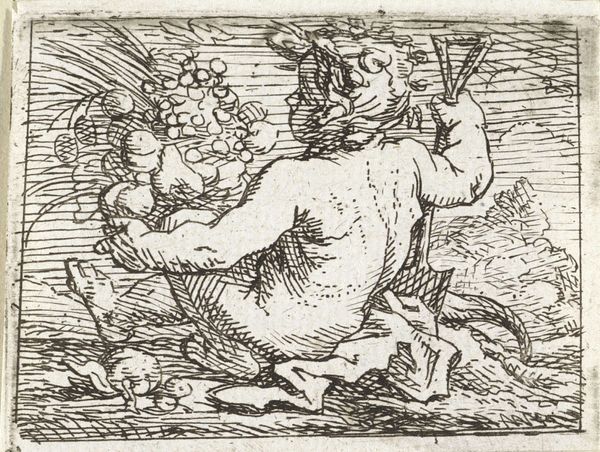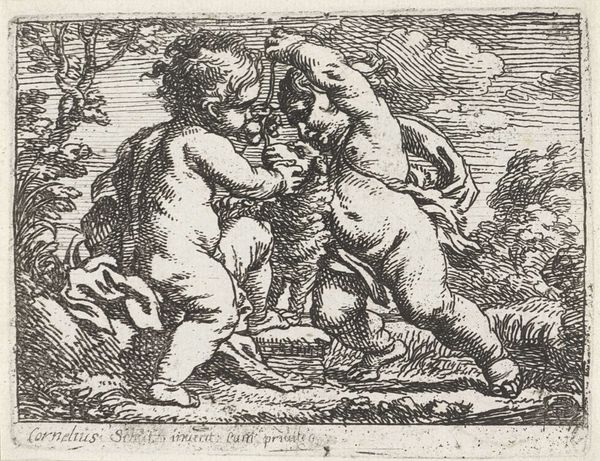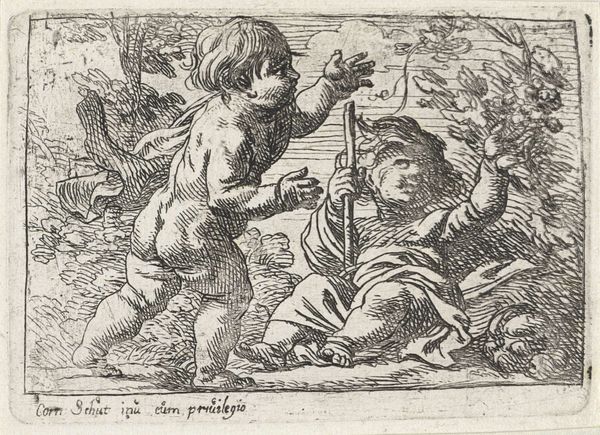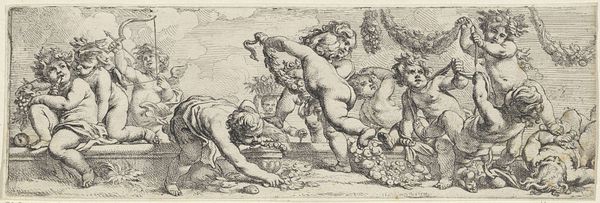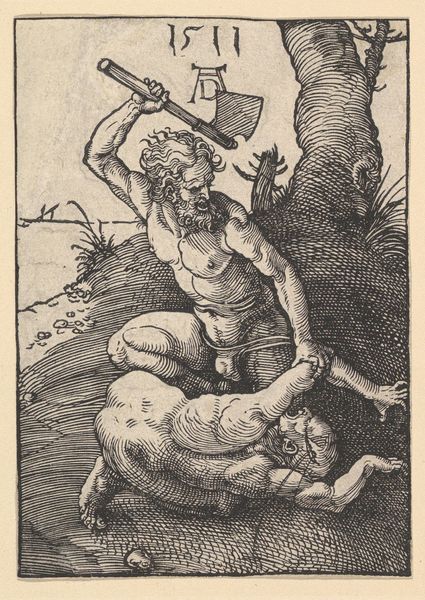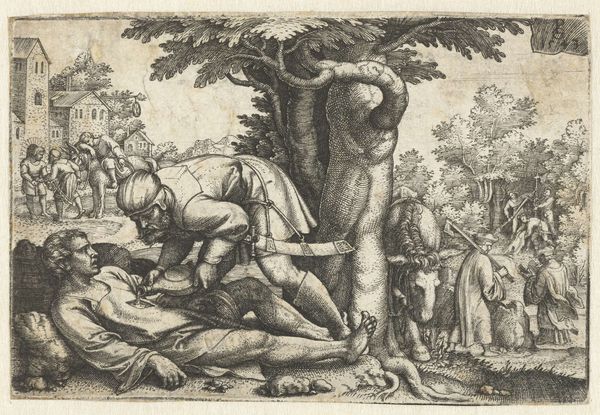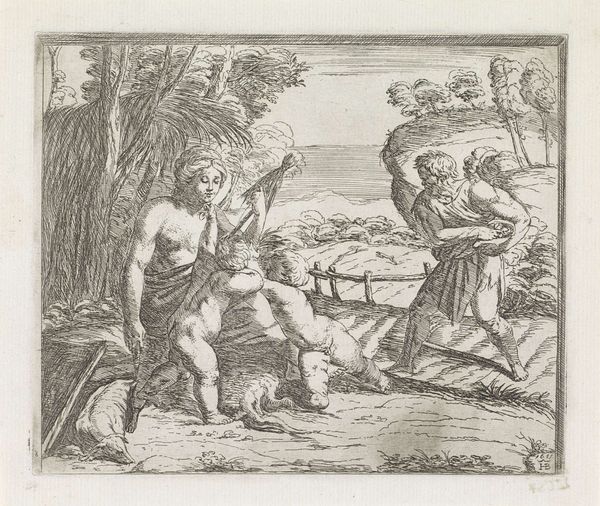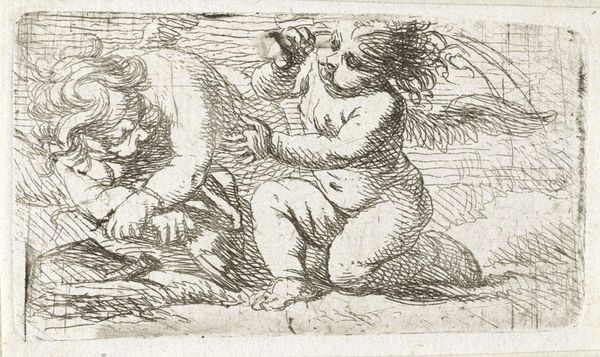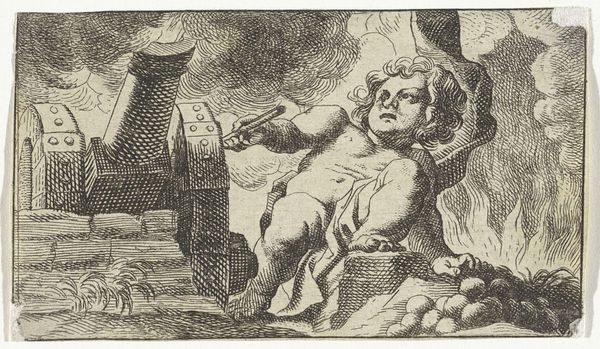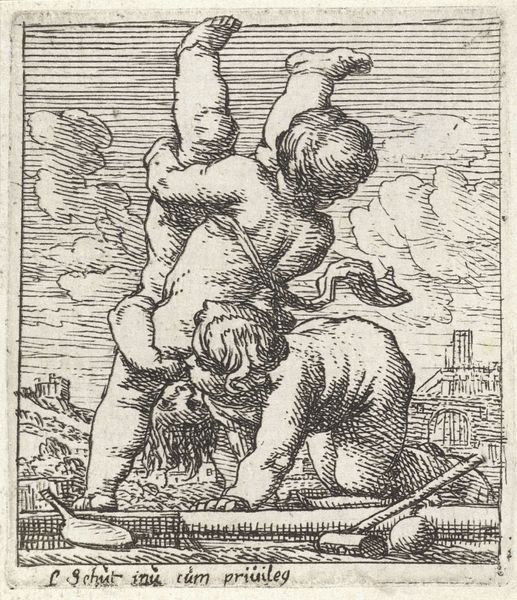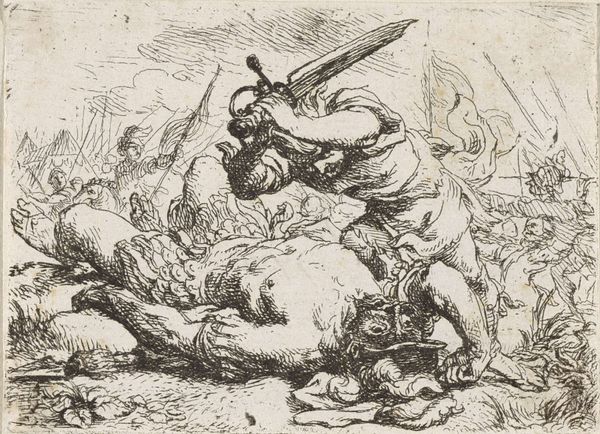
drawing, ink, pen
#
drawing
#
baroque
#
figuration
#
ink
#
pen
#
history-painting
Dimensions: height 54 mm, width 76 mm
Copyright: Rijks Museum: Open Domain
Curator: Looking at this pen and ink drawing, "Two Putti by a Fire," attributed to Cornelis Schut, dating roughly from 1618 to 1655, I'm struck by its dramatic chiaroscuro. The way Schut employs light and shadow is very theatrical. Editor: My initial impression is one of frantic activity. There’s a chaotic energy in the scratchy lines. It feels rough, immediate – definitely prioritizing process over polished finesse. Curator: The roughness, I think, is very deliberate. The Baroque period prized dynamism and emotion. A polished surface might seem cold, but this technique perfectly suits the moment—emphasizing drama and a sense of urgency. It's intended to pull you into the story, a miniature history painting rendered with incredible immediacy. Editor: True, the story seems to be centered around this very intense act of creating fire – consider the material conditions, the striking of the flint and steel needed for warmth or survival in a society keenly aware of material realities. It prompts me to consider who controlled these essential technologies in that era. Curator: Absolutely. While seemingly simple, this drawing speaks volumes about its socio-political context. The control of fire-making techniques also implies social hierarchy and access to resources. It shows how Baroque artists used mythology to reinforce contemporary societal structures, placing human endeavour within a divine context, almost like theatre. Editor: The raw quality of the ink, the quick movements implied in the application - it challenges the elevated status often given to drawing as preparation. The materiality, combined with a mundane subject, creates something that seems equally important to final presentation, don't you think? Curator: That’s interesting, yes. The lines are powerful in this little tableau. What begins as a simple moment then broadens. It opens avenues to consider Baroque aesthetics more widely, moving past formal qualities into how cultural history shapes the perception and consumption of art. Editor: It really gives a view into daily experience in this period – not just art as it gets filtered through exhibition spaces but also how manual skills intersected with visual culture at a deeper level. Thanks for bringing this perspective! Curator: Thank you. Looking at this artwork now, I am also reminded about our human instinct of looking towards divinity.
Comments
No comments
Be the first to comment and join the conversation on the ultimate creative platform.
